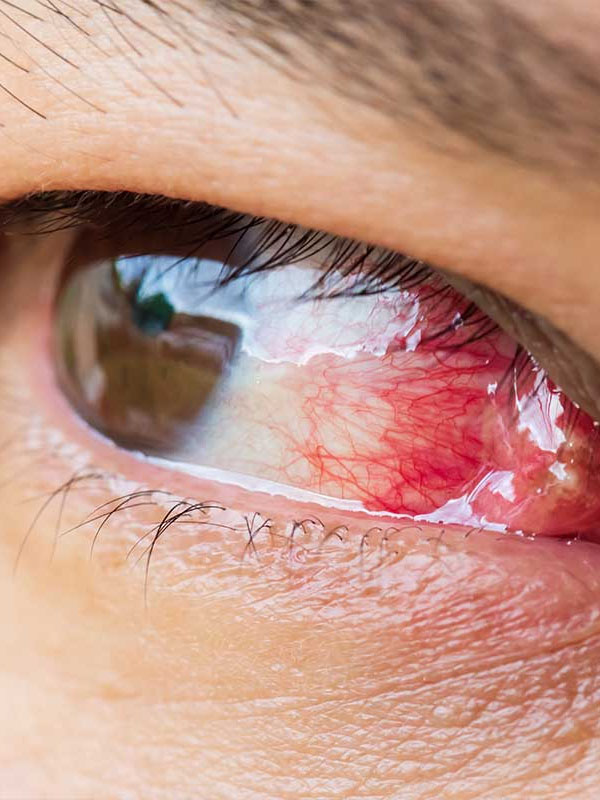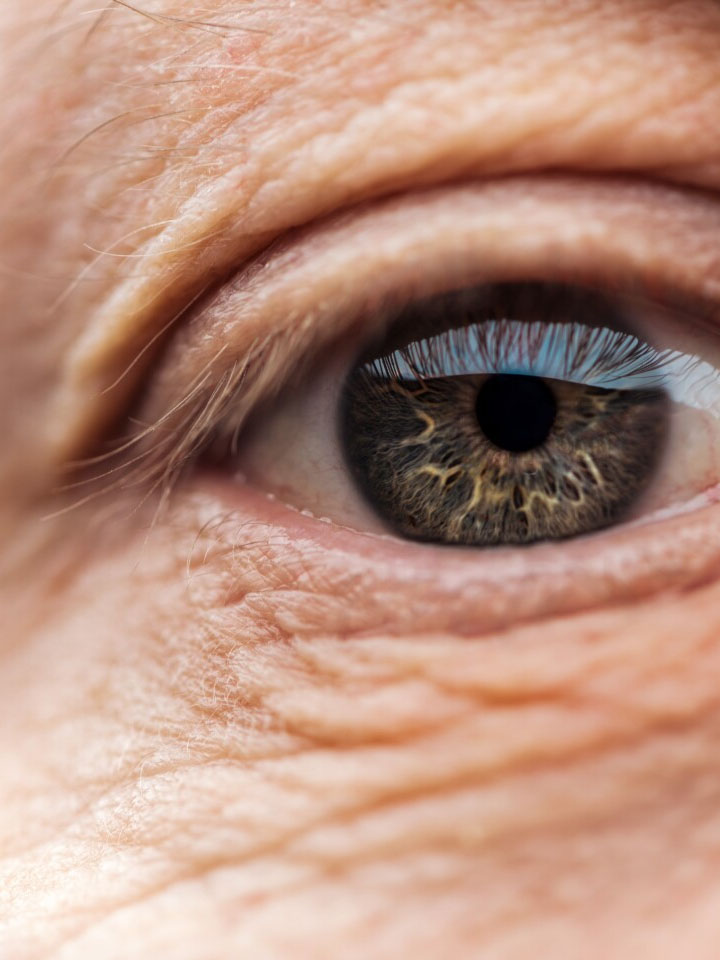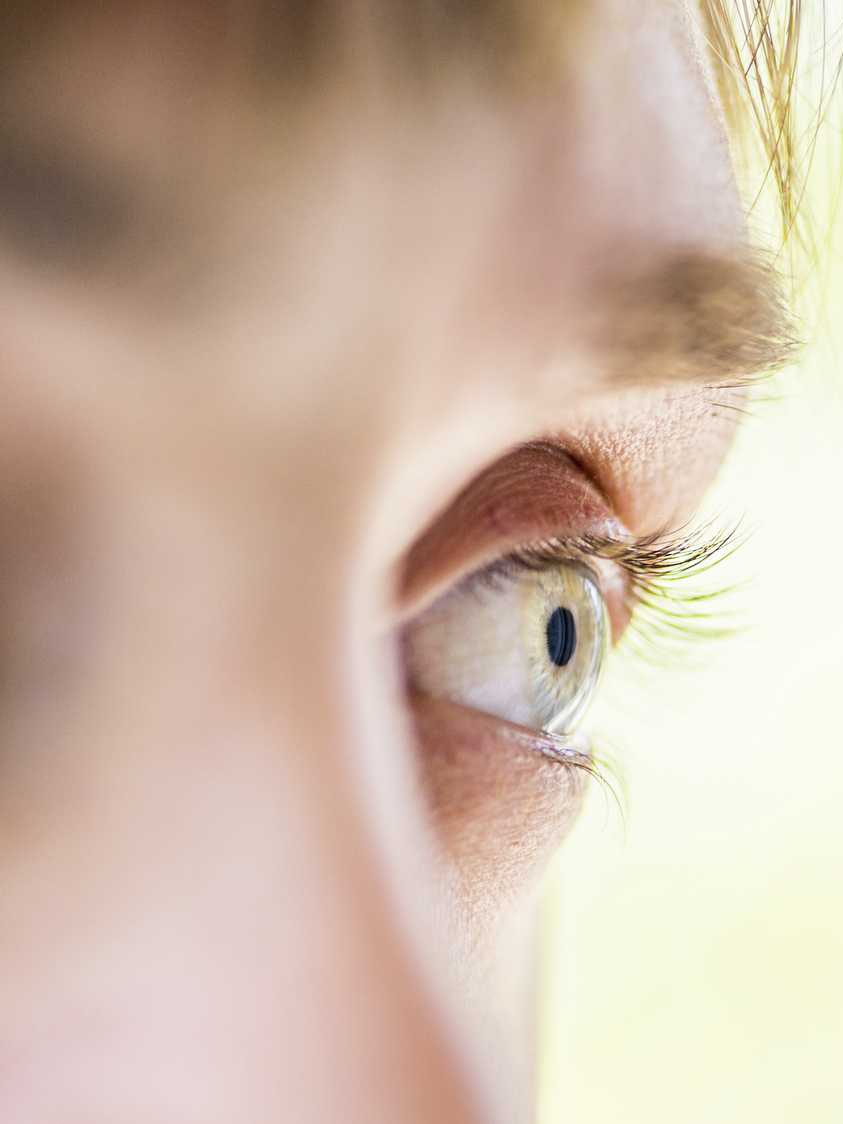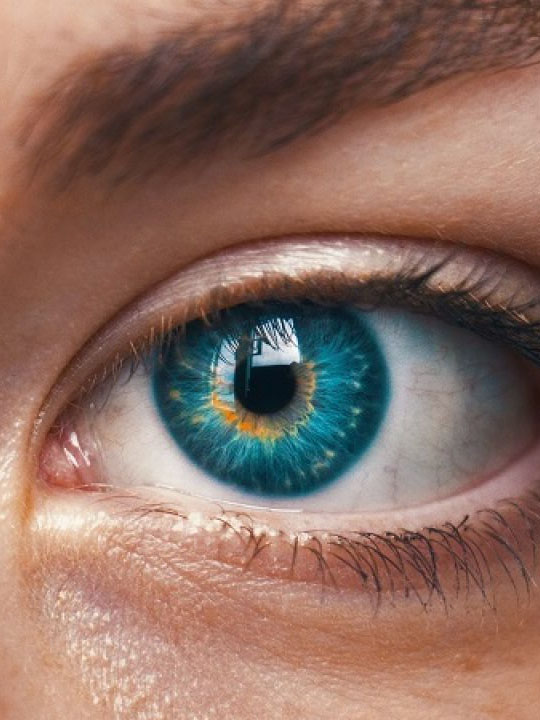
What is a cataract?
A cataract is an opacification of the lens in the eye. This leads to a progressive decline in vision. People with cataracts often feel as if they are looking through a dirty window.
What is the treatment of a cataract?
When a cataract is severe enough to cause visual loss, it needs to be removed surgically. Very small incisions are made in the front of the eye. Through these small incisions, the cloudy cataract is removed, and a new intraocular lens is carefully placed. This lens will become a permanent part of the eye.
Before surgery, the eye is meticulously measured to calulate the size of the lens to be placed in the eye. Dr Steyn will discuss different lens options as per your personalized visual requirements with you prior to the surgery.
Cataract surgery is performed at the Johannesburg Eye Hospital. It is a day procedure and does not require an overnight stay.
What is a pterygium?
A pterygium is a growth on the surface of the eye. It starts on the white part (sclera) of the eye, and eventually grows over the clear part (cornea) of the eye. A pterygium can cause problems in various ways. It may become inflamed and be red and give an uncomfortable and gritty feeling. It can cause visual distortion and loss, either by growing over the visual axis of the eye (the pathway where light enters the eye) or by causing astigmatism (where the eye has poor vision from an abnormal shape). And it can also be cosmetically unpleasing.
What is the treatment of a pterygium?
A pterygium can be treated with medication (anti-inflammatory drops) to give symptomatic relief. However, this will not make the pterygium go away. If a pterygium is problematic and medication use does not give sufficient relief, surgery is the next option. During pterygium surgery Dr Steyn will carefully remove the growth from your eye. She will then place healthy eye tissue from your eye in that area which is secured using fibrin glue.


What is glaucoma?
Glaucoma is a condition in which high pressure inside the eye progressively damages the optic nerve. The optic nerve sends the visual signal from the eye to the brain and damage to the nerve leads to visual loss. If left untreated, glaucoma will lead to blindness.
What is the treatment of glaucoma?
There are many different forms of glaucoma and the treatment will depend on the type of glaucoma you have as well as the severity of glaucoma.
Medication in the form of eyedrops is often successful. Surgery may be required in the case of resistant glaucoma or for patients not wishing to use eye drops. During glaucoma surgery, various approaches can be used to assist with the permanent lowering of the pressure in the eye.
What is Age Related Macular Degeneration?
Age related macular degeneration, also known as AMD, is a condition in which there are deposits in the fine vision area of the eye. There are two major types of AMD: wet and dry.
In wet AMD, the eye has developed new blood vessels in response to the deposits. These new vessels leak and cause a severe loss of vision. Wet AMD is treated with medication injected into the eye which stops the growth of new vessels. Injections are given monthly at first until an adequate response is seen, at which stage the period between injections can be prolonged.
Dry AMD has no new vessels and has a slower rate of visual loss. However, there is no treatment currently available to reverse vision loss from dry AMD.


What is diabetic retinopathy?
Diabetes can affect the eye in various ways, but diabetic retinopathy is the most important as it can lead to blindness. In diabetic retinopathy, the small blood vessels of the retina is damaged and this leads to either leakage, blockage, or new vessel growth; all of which can lead to visual loss and blindness.
How do you diagnose diabetic retinopathy?
Diabetic retinopathy usually has no symptoms in the early stages of the disease and that is why screening for diabetic retinopathy is very important. All patients with diabetes should have an eye exam at least once a year, and more frequently if recommended by your health care professional.
During your diabetic screening, Dr. Steyn will place drops into the eyes to dilate the pupils. This allows a better view of the retina. She will then look with an ophthalmic instrument at the entire retina to identify diabetic changes in the eye. She may also need to perform a scan of the retina to further evaluate the eye.
How do you treat diabetic retinopathy?
The most important part of the treatment of diabetic retinopathy is to improve your diabetic management. Dr. Steyn will liaise with your primary treating doctor and they will assist you to tighten your diabetic control.
The retinopathy in the eye can be treated with medication injected into the eye, laser, and even surgery.
What is strabismus?
Strabismus is the mane given to eyes that are not straight. In strabismus, one or both of the eyes may turn and not look straight ahead.
What causes strabismus?
Strabismus can be caused by many different factors and Dr. Steyn will carefully and systematically evaluate your squint to identify the cause. Causes can include a need for glasses, muscle weakness, a nerve malfunction, or even disease within the eye.
What is the treatment of strabismus?
Treatment will depend on the exact cause of the strabismus, but in many cases, surgery will be required. During squint surgery, the muscles around the eye are moved to make them stronger or weaker. This will help to make the eyes straight.
